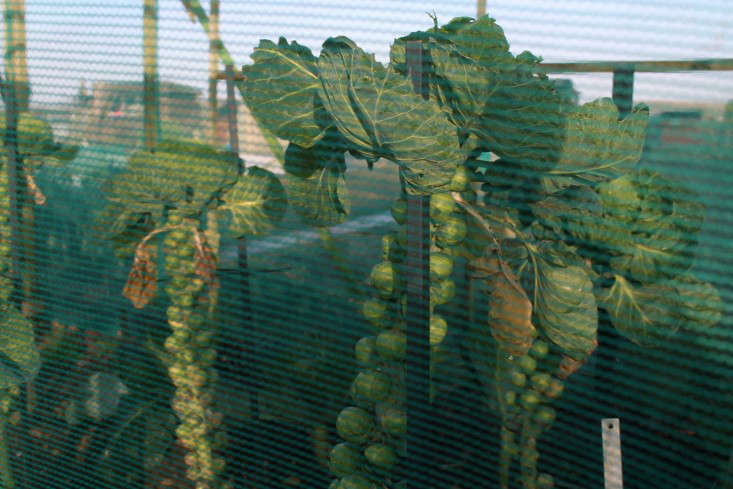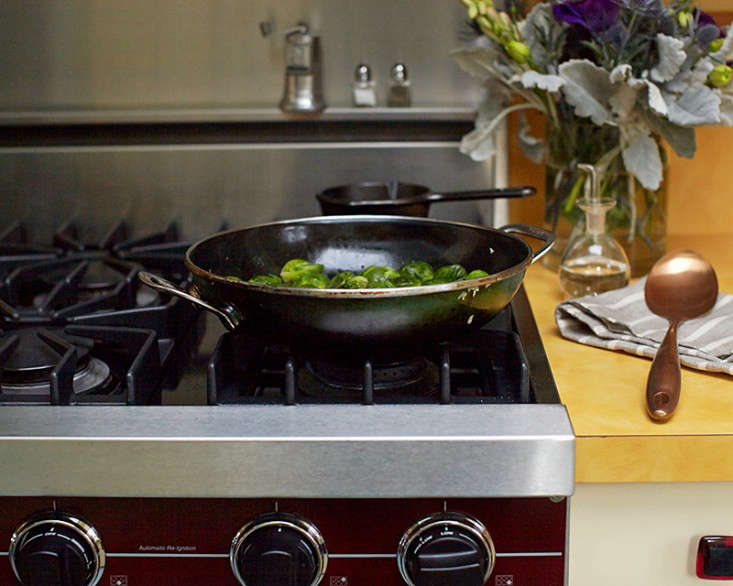Brussels sprouts (Brassica oleracea): “The Dark Horse”
Unwieldy in the garden, controversial in the kitchen, Brussels sprouts have to work twice as hard to win our approval. And yet those who love them really love them.
The key is in growing your own. The sweetness of a sprout increases with cold and decreases after picking. Going out on Christmas morning to pick Brussels sprouts for the big feast, as my friend Peter does, is the optimal way. Old sprouts, usually overcooked, are the greens that we love to demonize.
Photography by Kendra Wilson, except where noted.
Above: The beauty of winter vegetables is that the ground is a natural storage place. Harvest them when you need them. Brussels can be picked as and when, by twisting off the bigger sprouts first, closer to the base. Farm shops and markets sell them by the stalk. Storing them somewhere cool will keep them reasonably fresh. Ideally you should eat them right away or blanch and revive later with frying.
Cheat Sheet
- Sow seed in late spring, planting out six weeks later, after the true leaves appear.
- Plant with winter salad in the colder months to keep them from looking bare and rangy. Be prepared to give them enough space in the summer when there will be more competition.
- Red Brussels sprouts are a good option in a decorative kitchen garden. New improved varieties are ‘Falstaff’ and ‘Red Delicious.’
Keep it Alive
- Like other members of the brassica family, sprouts need to be netted against pigeons.
- Crop rotation is important for Brussels and other brassicas, as pests such as cabbage root fly will overwinter underground.
- Add supports on planting out as the extenuated cabbage stalks grow tall and heavy.
Above: Brussels sprouts benefit from intercropping; it improves their looks and can improve their health. Charles Dowding, the no-dig guru, has said that planting sprouts with lettuce improves the vigor of the former. Some say that garlic as a companion plant improves the flavor as does dill. Experiences vary according to soil and situation.
Above: Herbs are tried-and-tested fly deterrents for brassicas, and they are worth growing near sprouts (for instance: mint, sage, calendula, rosemary) and thyme). Grow them with flowers too in the kitchen garden: a diversity of plant types will attract pollinators, which will keep the natural cycle moving.
Above: Photograph by John Merkl for Gardenista.
Cookery writer (and Elizabeth David editor) Jill Norman says that Brussels sprouts need to be “tempered” with other things, since their flavor is “quite out of proportion to their size.”
Mollie Katzen of Moosewood Cookbook fame tempers hers with onions (above), adding them when she sautés sprouts. A quick fry takes them further away from school memories of soggy greens. Other partners are bacon, chestnuts, or olive oil and lemon.
For the full recipe see: Garden-to-Table Recipe: Mollie Katzen’s Smoky Brussels Sprouts and Onion.
Above: Old habits die hard and many of us cut a cross at the base of each sprout. Whether this is to ensure even cooking or a quick escape for small insects (as I was told) is very debatable.
More from my friend Peter’s garden: Garden Visit: What to Eat Now From a British Allotment.
Planning a Thanksgiving menu? See our recipes for Squash to Be Grateful For and Farmhouse Apple Cake.
Finally, get more ideas on how to successfully plant, grow, and care for brussels sprouts with our Brussels Sprouts: A Field Guide.
Interested in other edible plants for your garden? Get more ideas on how to plant, grow, and care for various edible plants (including flowers, herbs and vegetables) with our Edible Plants: A Field Guide.


















Have a Question or Comment About This Post?
Join the conversation (2)